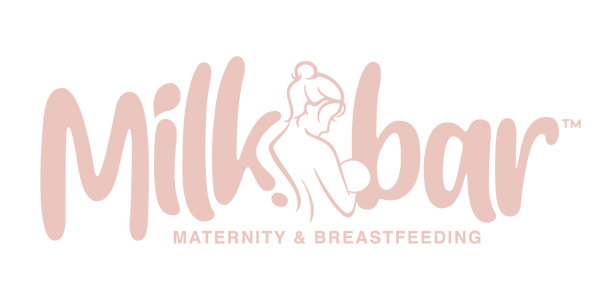
The Ultimate Guide to Breastfeeding: Terminology, Tips, and Real-Life Experiences
Share
The Ultimate Guide to Breastfeeding: Terminology, Tips, and Real-Life Experiences
Let's delve into some common breastfeeding terms, tips for successful nursing, and real-life experiences from mothers who've been there. Plus, we'll explore some fantastic products from Milkbar New Zealand that can make your breastfeeding journey smoother. Plus, get 20% off using code ULTIMATE20 as our thanks for being here!
Understanding Breastfeeding Terminology
-
Clogged Ducts: This term refers to blocked milk ducts in the breast, which can cause discomfort or pain. Regular nursing and warm compresses can help unclog them1.
-
Cluster Feeding: This is when your baby feeds more frequently at certain times of the day. It's completely normal and often happens during growth spurts2.
-
Colostrum: Known as 'liquid gold,' colostrum is the first milk that the body produces, rich in nutrients and antibodies3.
-
Engorgement: This is when the breasts become overly full, causing discomfort or pain. Regular feeding and pumping can help relieve engorgement
-
Flow: Flow refers to the speed at which breast milk is released during breastfeeding.
-
Exclusively Expressing: This is when a mother chooses to exclusively express her breast milk (either by hand or using a pump) and feed it to her baby via a bottle or other method6.
Tips for Successful Breastfeeding
-
Find a Comfortable Position: This could be the classic cradle hold or the clutch (football) hold, which is often used by mothers who have had C-sections, twins, or have large breasts7.
-
Ensure Proper Latch: Make sure your baby has a good latch to prevent nipple soreness and ensure they're getting enough milk.
-
Stay Hydrated and Eat Well: Your body needs extra nutrients and hydration to produce milk.
-
Ask for Help: Don't hesitate to seek help from lactation consultants or your healthcare provider if you're facing difficulties.
Products for a Smoother Breastfeeding Journey
Milkbar New Zealand offers a range of breastfeeding-friendly products that can support your nursing journey, plus, our Blog readers can enjoy 20% our breast pumps, clothing and sterilisers off using the code ULTIMATE20 !
-
Breast Pumps: An efficient breast pump can be a lifesaver, especially for mothers who are exclusively expressing. The Milkbar Advanced Flow Double Electric Breast Pump is a great Hospital Grade option with its compact design and adjustable suction levels.
-
Sterilisers: An easy to use, efficient Steriliser is essential. The Milkbar UV Steriliser and Dryer offers ease, peace of mind, and efficient sterilising and drying of pump parts, dummies, cuddlies, essentials and household items.
-
Nursing Clothes: Milkbar's range of nursing clothes are stylish and functional, making breastfeeding on the go a breeze.
Breastfeeding is a unique journey filled with ups and downs. With a little knowledge, the right tools, and a supportive community, you can navigate this path successfully.
Real-Life Experiences
Breastfeeding experiences vary greatly from mother to mother. Some find it easy and natural, while others face hurdles like low milk supply, latching issues, or postpartum depression. Read some of our Milkbar Mamas' real life experiences here!
What is breastfeeding and why is it important?
Breastfeeding is the natural process of providing infants with vital nutrients, antibodies, and emotional connection through the mother's milk. It offers numerous benefits, such as:
- Optimal nutrition: Breast milk contains the perfect balance of proteins, fats, and carbohydrates, tailored specifically for the baby's needs, promoting optimal growth and development.
- Immune system boost: It provides antibodies and immune cells that protect babies against infections and diseases, reducing the risk of illnesses.
- Bonding and emotional connection: Breastfeeding fosters a unique bond between mother and baby, creating a sense of security and comfort.
Now, let's demystify some common breastfeeding terminology you may come across:
1. Letdown
Letdown refers to the release of milk from the breasts. It typically occurs when the baby starts breastfeeding or when there is a trigger, such as hearing the baby cry. Some mothers may experience a tingling sensation or even pain during letdown.
Example: "I felt a warm sensation in my breasts as my letdown reflex kicked in, and the milk began flowing for my hungry little one."
2. Flow
Flow refers to the speed at which breast milk is released during breastfeeding. There are two main types of flow:
- Foremilk: This is the initial milk released at the beginning of a feeding session. It is often thinner and helps quench the baby's thirst.
- Hindmilk: This comes later in the feeding and is richer in fat, providing the baby with essential calories.
Example: "I noticed that my baby seemed more satisfied and content after switching to the hindmilk, which is creamier and helps keep them full."
3. Expressing
Expressing refers to the process of manually or mechanically removing milk from the breasts. This can be done through hand expression, using a breast pump, or other methods. It allows mothers to store breast milk for later use or to relieve engorgement.
Example: "I started expressing milk so that my partner could also participate in the feeding process and give me some much-needed rest."
4. Engorgement
Engorgement occurs when the breasts become overly full and swollen due to an increase in milk supply. It can sometimes cause discomfort or pain. Frequent nursing or expressing can help alleviate engorgement.
Example: "During the early days of breastfeeding, I experienced engorgement, but with regular feeding and warm compresses, it gradually subsided."
5. Mastitis
Mastitis is an infection that can occur when milk ducts become blocked or damaged, leading to inflammation and pain. Common symptoms include breast redness, warmth, and flu-like symptoms. Seek medical attention if mastitis is suspected.
Example: "I had a challenging time battling mastitis, but with the help of antibiotics, rest, and continuing to breastfeed, I managed to overcome it."
6. Low supply
Low supply refers to when a mother's breast milk production is insufficient to meet the baby's needs. It can occur due to various factors such as stress, incorrect latch, certain medications, or underlying medical conditions. Working with a lactation consultant can help address low supply concerns.
Example: "I struggled with low supply initially, but with the guidance of a lactation consultant and implementing additional pumping sessions, my milk production gradually increased."
7. Oversupply
Oversupply refers to when a mother produces an excess amount of breast milk. While it may seem like a blessing, it can lead to challenges such as engorgement or an overly forceful letdown. Techniques like block feeding and paced feeding can help manage oversupply.
Example: "Dealing with oversupply was quite overwhelming at times, but finding the right balance through block feeding and using slower flow nipples made a significant difference."
Breastfeeding is a unique journey for every mother, and it comes with its own set of joys and challenges. Here are some additional insights to help you on your breastfeeding journey:
- Breastfeeding Myths Debunked: Contrary to popular belief, the size of your breasts does not determine milk production. Breastfeeding is possible for mothers with all breast sizes.
- Seeking Support: Connecting with other breastfeeding mothers, joining support groups, and consulting a lactation consultant can provide invaluable guidance and encouragement throughout your journey.
- Nourishing Self-care: Remember to prioritize self-care, eat a balanced diet, stay hydrated, and get sufficient rest to support your overall well-being
Sources:
